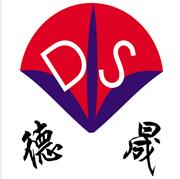- Enzyme(14)
- Carbomer(2)
- Blood collection tube additives(12)
- trinder's reagent(9)
- Biological buffer(21)
- Chemiluminescence reagent(9)
| Hubei xindesheng Material Technology Co., Ltd | |
|---|---|
| Country: | China |
| Tel: | +8618971041571 |
| E-mail: | zjing9632@gmail.com |
| QQ: | 2198447049 |
| Skype: | Chat Now! |
Those test items and advantages of the chromogenic substrate TOPS
Release time: 2021-06-04
People nowadays, eating is no longer a clear soup or lack of water, let alone a full meal, early to bed and early to wake up is a fantasy. The happy life you think is actually slowly eroding our health step by step. body. The most lively place in the hospital is the non-laboratory department. The common ones are the three highs, which are either liver problems or kidney problems. Various tests become particularly important. Only when the problem is detected can the right medicine be prescribed and resolved as soon as possible. Speaking of liver and kidney testing, we have to talk about our display substrate TOPS.
TOPS is used for creatinine detection of renal function:
In the presence of peroxidase, hydrogen peroxide reacts with 4-aminoantipyrine (4-AAP) and TOPS (ESPMT) or HTIB to produce quinone imines, which are color-developing products. The color intensity can be measured by absorbance, which is directly proportional to the creatinine concentration.
TOPS is used for uric acid detection of renal function:
The detection of uric acid is to first catalyze the complete oxidation of uric acid, oxygen and water into allantoin, carbon dioxide and hydrogen peroxide H2O2 by uricase. H2O2 reacts with TOPS and 4-AAP under the catalysis of POD, TOPS is oxidized into a color product, and the absorbance is measured with a spectrophotometer, and the absorbance is proportional to the content of uric acid for uric acid analysis.
TOPS is used for the detection of free fatty acids in liver function:
Free fatty acids (NEFA) in the serum sample react with ATP and coenzyme A (CoA) under the catalysis of fatty acyl-CoA synthase to generate fatty acyl-CoA (Acyl-CoA), AMP and phosphate (PPi). Acyl-CoA is oxidized into Enoyl-CoA (Enoyl-CoA) and hydrogen peroxide under the catalysis of fatty acyl-CoA oxidase, and finally hydrogen peroxide is catalyzed by peroxidase with 4-aminoantibi Lin reacts with TOPS to form a red quinone imine compound.
TOPS advantages:
Because of its molecular structure and the sulfopropyl group on the single atom connected to the benzene ring, there is one less hydroxyl group, which has a slightly stronger stability, high water solubility, and high detection sensitivity. In the presence of hydrogen peroxide and peroxidase, chromogen TOPS reacts with 4-aminoantipyrine (4-AA) or 3-methylbenzothiazole sulfone hydrazone (MBTH) during the oxidative coupling reaction. Forms very stable color dyes. It is widely used in diagnostic testing and biochemical testing, mainly for the colorimetric determination of uric acid and cholesterol; when it is used as a water-soluble reagent, it can be used to determine hydrogen peroxide by enzymatic photometry.
TOPS storage requirements:
1. Its water solubility is destined to be in a closed environment, and it must be operated in a dehumidified environment, otherwise it is easy to absorb moisture and cause its chemical properties to change.
2. Pack the product in a light-proof bottle because it is sensitive to light.
3. The temperature should be kept at 0-5°C.

